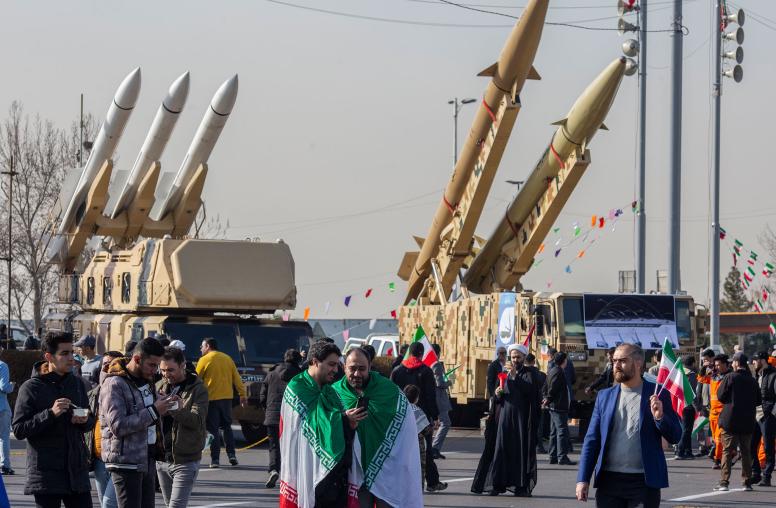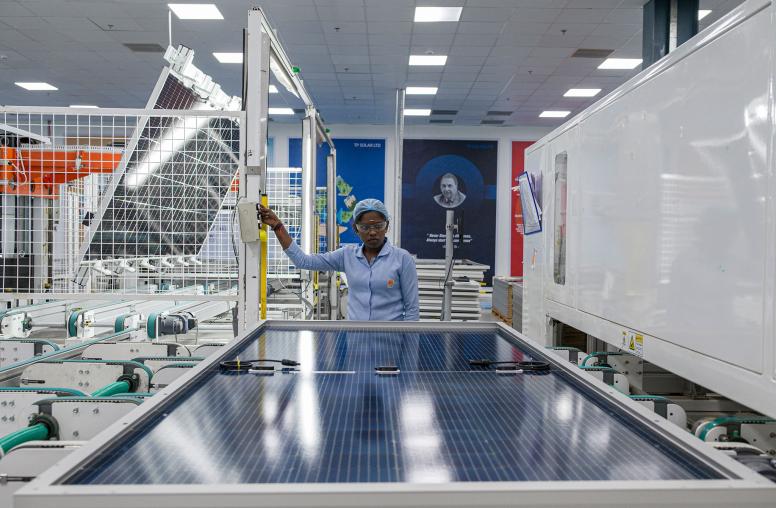U.S.-Pacific Islands Summit: Getting Beyond the Honeymoon Phase
With its regional strategy now one year old, the U.S. is seeking to sustain this high level of attention.
President Joe Biden will host Pacific Island leaders for a summit at the White House starting next Monday, marking one year since the first-ever such summit in September 2022. These high-level meetings signify the increasing level of attention that the U.S. government is paying to the region as its concerns about China’s activities there grow.

The United States is still in somewhat of a honeymoon phase in its reengagement with the Pacific Islands. Since the rollout of the U.S. Pacific Partnership Strategy last year, the United States has opened new embassies in the region and signed a series of funding and security agreements with Pacific Island countries.
But, as with all bonds, making the relationship last hinges upon mutual understanding and, when necessary, having conversations about difficult issues. The main challenge for the U.S. government going forward will be sustaining this level of engagement and fulfilling the promises it has made — especially since so much funding hinges on congressional approval.
What the United States Still Needs to Know About the Pacific Islands
As the U.S. government continues its ambitious plan to reengage the region — a region from which it had been largely absent for decades — there are still several lessons that need to be learned and reinforced.
First, the Pacific Islands is not one bloc, but a diverse region made up of many countries and cultures. The countries of the region vary by size, ranging from Papua New Guinea’s more than 10 million people to places like Nauru and Tuvalu, where the population is closer to 10,000. Similarly, Pacific Island countries employ various types of governance — there are republics, parliamentary democracies and Tonga, the region’s only monarchy. Only three Pacific Island countries have militaries. This is by no means a one-size-fits-all region. Therefore, U.S. efforts to understand and address each country’s specific needs will be well-received, as will efforts to meet with their leaders one-on-one.
The plan to receive Pacific Island leaders at the White House is well-intentioned — and most likely appreciated — but it is, in part, an apology for Biden’s cancellation of his planned visit to Papua New Guinea in May. Pacific Island leaders also appreciate high-level visits to their own capitals, and the United States has made significant efforts in this regard so far this year and should continue striving to do so.
Second, while it’s tempting to look at competition with China in the region as a point-scoring game, such an approach is of limited value. It’s impossible to truly measure influence because it’s not quantifiable. Ironically, the best way for the United States to out-compete China is simply not to play the game at all, and instead focus on Pacific Island countries’ own priorities.
Thirdly, U.S. reengagement should be kept in perspective. Over the past year, the U.S. government has made efforts to expand its diplomatic presence and increase aid to the region, with multiple successes. But these are only the initial steps of diplomacy, and do not yet signify successful U.S. reengagement across the region. There are still significant gaps, like in Kiribati, where efforts to establish a U.S. embassy have stalled and China has seemingly made major inroads in terms of elite capture.
What the Pacific Islands Still Need to Know About the United States
Americans know that Congress holds the power of the purse, but this feature of the U.S. Constitution is by no means universally known overseas, including in the Pacific, where a leader is more likely to have more control over the legislature. In the Pacific Islands, announcements from the U.S. president or a political figure like the secretary of state tend to be received with the assumption that there are funds behind it. This is not so.
The U.S. government has made a series of promises to the Pacific Islands over the past year, including promising economic assistance for Palau and the Federated States of Micronesia and funding for the South Pacific Tuna Treaty, among other things. These are important semaphores of renewed U.S. commitment — yet they are not currently funded. In short, there may be a mismatch in expectations which could damage U.S. credibility if promises that were made are perceived as being broken.
Pacific Island countries can also better understand the United States by simply remembering that the sheer size of the U.S. government means that it operates much differently than Pacific Island countries do. Whereas the Pacific is highly relationship-oriented, the U.S. government is so large that it is simply not relational in the same manner. In addition, there is often a high rate of turnover within U.S. government agencies, which creates a similar effect.
The Remaining Thorny Issues Between the United States and the Pacific Islands
Often, the conventions of diplomatic necessity and statecraft mean that controversial issues aren’t put on the table at big summit events like the one planned for next week. Topics that fit this category — and therefore are not likely to be addressed explicitly — are the role of AUKUS in the region, the legacy of U.S. nuclear tests, and the United States’ own contributions to climate change.
AUKUS is a tripartite security agreement between the United States, United Kingdom and Australia that promotes deeper information and technology sharing. But perhaps its most eye-catching and tangible feature has been Australia’s proposed acquisition of eight nuclear-powered (but conventionally armed) submarines as part of the agreement.
While the submarines themselves won’t arrive until the late 2030s, official reactions from Pacific Island leaders have ranged from acceptance to alarm, while the Pacific Elders — a group of retired eminences — expressed concern about militarizing the Pacific. There was also a concern that AUKUS states didn’t much consult the Pacific in advance of the announcement.
The nuclear-powered nature of the Australian submarines has caused jitters because of the nuclear-free status of the Pacific, enshrined in the Treaty of Raratonga. The treaty prevents the placement of nuclear weapons in signatory states, which includes Australia.
One of the reasons why the Pacific is so focused on preserving its nuclear-free status is the region’s own close-quarters experience with nuclear tests conducted by the United States and others.
Between 1946 and 1958, the United States tested 67 atomic weapons in the Marshall Islands, and the effects still reverberate in the country to this day — with high rates of thyroid cancer in the local population, among other issues. A Marshallese request for U.S. compensation for the nuclear tests has been a major issue in negotiations over funding under the Compact of Free Association. And the request was reiterated by Marshall Islands President David Kabua just this week.
Meanwhile, climate change is an existential threat to the Pacific Islands. As the United States reengages the Pacific Islands, it will need to grapple with its own contributions to global CO2 emissions. In the year since the last summit, Vanuatu — the most at-risk country for natural hazards in the world — suffered from two cyclones in March, while Kiribati and Tuvalu suffered drought. In August, wildfires swept through Maui, Hawai‘i, prompting an inversion in the usual humanitarian assistance relationship, with Fiji offering assistance to the United States.
Then there are the creeping catastrophes so commonplace that they don’t receive specific coverage: rising sea levels and increasing extreme weather patterns caused by the effects of climate change. We saw this in our own travels in the Pacific Islands this year. On Ebeye in the Marshall Islands, water in the streets was knee-deep, while in the Autonomous Region of Bougainville, weeks of heavy rains had made even major roads impassable.
This is a problem that “climate adaptation” initiatives — despite their necessity — will not solve alone. Rather, it is a problem that must be addressed both at the domestic level and with U.S. contributions and policy at the upcoming COP28, including on issues of compensation for “loss and damage” associated with climate change. This is also why Pacific Island countries have been so intent upon lobbying the international community to curb carbon emissions. If the United States wants its Pacific Partnership Strategy to be a success, its global climate policy must adapt accordingly.



